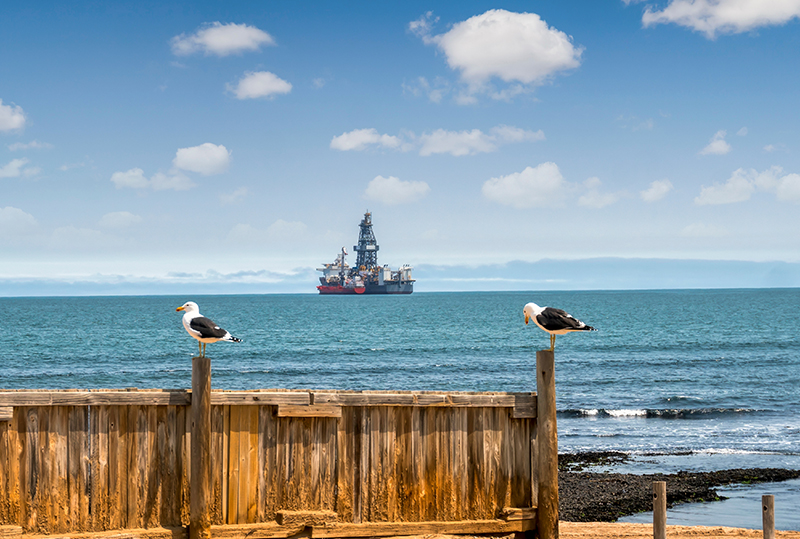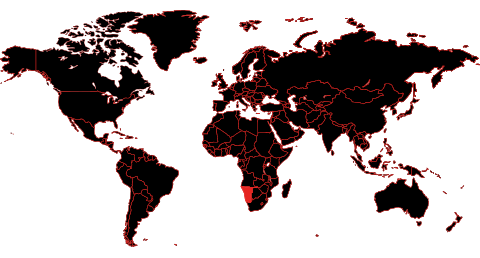How Namibia Can Build an Energy Economy Beyond Oil
The Road Ahead:
The discovery of oil is a moment of transformation, but its success is measured not by the size of reserves but by how a nation translates resource wealth into a sustainable economic future. Oil has the potential to serve as a catalyst, but it is not the end goal. The true challenge lies in constructing an energy economy that extends beyond crude extraction, ensuring that Namibia’s industrial, technological, and economic foundations remain strong long after the last barrel is pumped from the ground.
This is where Namibia’s energy policy, industrial strategy, and global positioning must converge into a coherent and forward-looking economic blueprint. The decisions made now will determine whether Namibia emerges as a diversified energy leader or becomes trapped in a cycle of resource dependency.
The Core Challenge:
Historically, many resource-rich nations have struggled to move beyond the primary extraction phase. The classic model follows a predictable cycle:
• Stage 1: Discovery & Exploration – Initial oil discoveries create investment inflows and economic optimism.
• Stage 2: Production & Export – Resource extraction begins, GDP surges, and government revenues increase.
• Stage 3: Economic Overreliance on Oil – Non-oil sectors stagnate, and government budgets become tied to fluctuating oil prices.
• Stage 4: Post-Extraction Decline – When reserves deplete or oil prices collapse, economies struggle due to a lack of diversified revenue sources.
Namibia must disrupt this pattern by simultaneously developing industries that complement and extend beyond oil extraction. This requires a multi-sectoral approach, integrating renewable energy, industrialization, petrochemical production, and long-term financial stability mechanisms.
Expanding the Energy Mix:
A. Using Oil Revenue to Scale Renewable Energy
Namibia’s geographic positioning provides an unmatched potential for solar and wind energy. The challenge is leveraging oil revenues to construct an energy infrastructure that allows for a transition to renewables over the next two decades.
• Hydrogen and Synthetic Fuel Development: Namibia has already begun positioning itself as a green hydrogen hub, but scaling this requires significant capital investment. Oil revenues can serve as a financing tool for the expansion of hydrogen production facilities, which will be critical in global energy markets as decarbonization accelerates.
• Wind and Solar Power Exports: Namibia’s desert conditions allow for some of the highest solar irradiation levels in the world. This provides an opportunity to become an electricity-exporting nation, supplying regional and global markets with renewable power.
• Grid Integration with Petrochemicals: A modern energy economy cannot be built on renewables alone. A strategic balance between hydrocarbons and renewables will create a resilient and diversified power grid capable of supporting industrial expansion.
B. Industrialization Through Petrochemicals and Refining
The vast majority of oil-exporting countries suffer from the “raw resource trap”—they extract crude and export it, only to import finished petroleum products at significantly higher costs. Namibia must break this cycle.
• Building a National Refinery: A domestic crude-to-product conversion infrastructure will reduce dependence on refined fuel imports while creating a secondary industrial base. Countries like Saudi Arabia have leveraged refinery expansion to diversify their economies into petrochemicals, plastics, and industrial lubricants—Namibia must follow suit.
• Developing a Gas-to-Liquids (GTL) Industry: Given the high gas content found in recent oil discoveries, GTL technology offers a way to convert gas reserves into diesel, jet fuel, and synthetic lubricants, creating a high-value downstream industry.
• Establishing Petrochemical Manufacturing Clusters: Beyond refining, petrochemical plants can serve as feedstock suppliers for industries such as plastics, fertilizers, pharmaceuticals, and advanced materials manufacturing.
C. Regional Energy Integration and Infrastructure Development
Namibia’s success will also be determined by its ability to integrate into regional and global energy networks.
• Deepwater Port Expansion for Energy Exports: Namibia’s $2 billion Walvis Bay expansion is an essential step toward becoming a regional energy export hub, connecting Southern Africa, Europe, and Asian energy markets.
• Pipeline Infrastructure for Cross-Border Distribution: Integrating into the Southern African Development Community’s (SADC) energy corridor can allow Namibia to supply refined products and LNG to neighboring countries, reducing regional dependence on external energy sources.
• Leveraging Global Energy Partnerships: Namibia must negotiate favorable trade agreements with international energy consumers, ensuring that its energy exports remain competitive and strategically positioned for long-term market access.
The Role of Sovereign Wealth Funds in Securing Long-Term Stability
A common failure of resource-rich nations is an inability to convert short-term resource revenues into long-term economic security. Namibia has the advantage of learning from successful models such as Norway’s Government Pension Fund Global (GPFG), which has insulated its economy from oil price volatility.
Critical principles for Namibia’s sovereign wealth strategy:
• Revenue Cap Policy: Only a fixed percentage of oil revenue should be included in the national budget, preventing fiscal overdependence on hydrocarbons.
• Investment in Future Industries: Wealth fund revenues should be allocated to high-growth sectors like technology, agriculture, and infrastructure, ensuring long-term economic resilience.
• Independent Fund Governance: Avoiding political control of sovereign wealth funds is essential—transparent governance ensures long-term stability and public trust.
The Geopolitical Considerations
Energy policy is inherently a tool of geopolitical leverage. As Namibia establishes itself in the global energy market, it must navigate the competing interests of major powers—each seeking access to its resources.
• China’s Interest in Namibia’s Energy Sector: Given China’s Belt and Road Initiative (BRI) investments across Africa, Namibia must ensure strategic autonomy in negotiations while securing financing for infrastructure projects.
• European Energy Diversification Needs: With Europe actively seeking alternative energy sources post-Russia’s invasion of Ukraine, Namibia can position itself as a key energy supplier for the EU’s long-term transition plan.
• U.S. and Gulf Investment Strategies: As Gulf nations and the U.S. shift toward renewable investments, Namibia must align its energy strategy with global capital flows, securing investment beyond fossil fuel extraction.
Namibia’s Oil is a Means, Not an End
The discovery of oil is not the success story—it is merely the beginning of a complex economic transformation.Namibia has the rare advantage of entering the oil era with the benefit of hindsight, allowing it to implement best practices in resource management, energy diversification, and global market positioning.
The decisions made in the next five years will determine whether Namibia:
1. Becomes a high-income, energy-diverse economy with sustainable growth, or
2. Falls into the cycle of resource dependence and missed opportunities.
A well-executed strategy will ensure that Namibia is not just another oil-producing country—but a nation that redefines how energy wealth is harnessed for long-term national prosperity.
Key sources:
• Norwegian Ministry of Finance (2023). “The Government Pension Fund Global: Investment Strategy and Long-Term Sustainability.”
• International Energy Agency (2023). “Energy Transitions in Emerging Markets: A Policy Roadmap for Africa.”
• World Bank Group (2023). “Resource Wealth and Economic Diversification: Case Studies from Leading Energy Producers.”
• Namibian Ministry of Mines and Energy (2023). “Oil and Gas Development Policy: Framework for National Growth.”
• United Nations Economic Commission for Africa (2023). “The Role of Sovereign Wealth Funds in Africa’s Resource Management.”
Earth Day 2025 – Our Power, Our Planet
“Our Power, Our Planet” — the theme of Earth Day 2025 — is not just a rallying cry for envir
Positioning Namibia’s Youth at the Center of Its Energy Future
Namibia stands at a pivotal moment in its national development, faced simultaneously with a signific
What Every Namibian Student and Entry-Level Professional Should Know About the Upstream Oil & Gas Sector
The upstream oil and gas industry in Namibia is no longer a theoretical possibility—it is a rapidl




